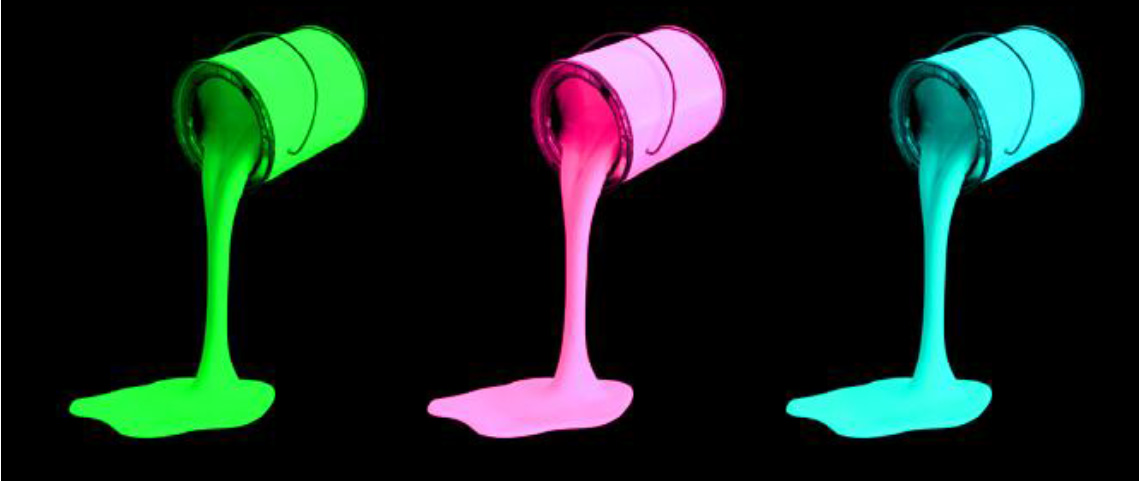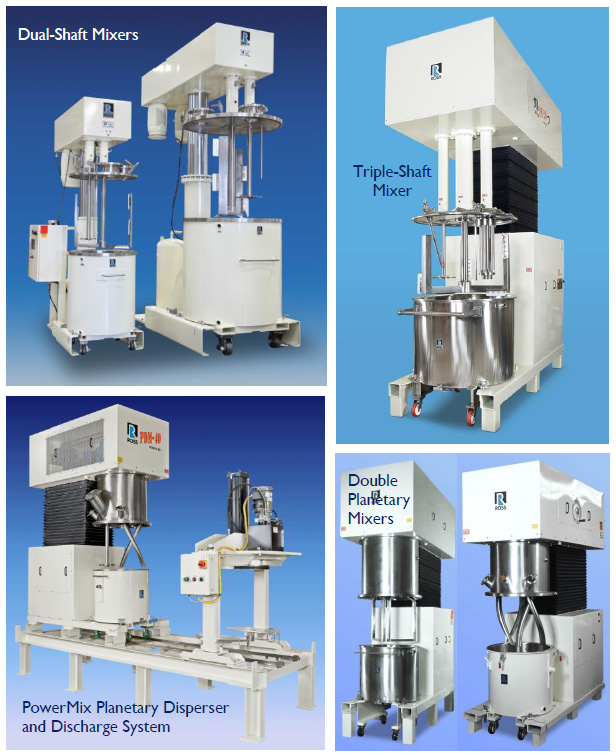Tech Report
Recommended Mixing Equipment for High Viscosity Coatings

Application Summary
Depending on their method of application and intended use, certain coatings are produced as high viscosity fluids. Controlling rheology is one way of achieving desired coating performance in terms of sag and spatter resistance, flow leveling, gloss, film formation and other attributes.
The mixing technologies utilized in the production of high viscosity coatings vary from one formulation to another. Mixer selection is based on a number of factors but primarily viscosity profile and shear input.
Ross Multi-Shaft Mixers and Planetary Mixers
Ross Multi-Shaft Mixers are well-proven equipment in the manufacture of high viscosity coatings up to several hundred thousand centipoise. Equipped with two or more independently-driven agitators working in tandem, Multi-Shaft Mixers deliver a robust combination of high shear agitation and laminar bulk flow ideal for a wide range of non-Newtonian fluids. The agitators can be engaged in any combination and at any speed for any interval during the mixing cycle. Although this sounds complex, Multi-Shaft Mixers are actually engineered to be comparatively simple and cost-effective.
The most economical design is the Dual-Shaft Mixer which features a low-speed anchor and a high-speed saw-tooth disperser blade. A typical mixing procedure starts with blending of the solvents and binders, followed by step-wise addition of solids and minor liquid components, i.e. pigments, extenders, wetting and dispersing agents, rheology modifiers, defoamers, moisture scavenger, other additives and catalysts. Temperature control during the different stages of mixing is important and scrapers attached to the anchor agitator help optimize heat transfer across the jacketed sidewalls and bottom of the vessel.
Finished product that is too slow to discharge by gravity (even with assistance from the anchor) is usually pressed out of the vessel by a platen-style Discharge System. This technique allows for fast and efficient product transfer with minimal waste and clean-up.
Specialty coatings that undergo very high viscosity peaks (above 1 million cP) are better prepared in Planetary Dispersers and Double Planetary Mixers. Planetary-style mixers consist of two or more blades which rotate on their respective axes as they revolve around the mix vessel. The agitators continually advance into the batch and contact fresh product all the time.
Combining slow-speed planetary agitation with an orbiting high-speed disperser, the Ross PowerMix Planetary Disperser quickly incorporates large amounts of solids into a thick liquid base. Each agitator is independently controlled so flow patterns and shear rates are easily fine-tuned with every change in product rheology. The classic Double Planetary Mixer, on the other hand, is ideal for formulations which start out with melting of a semi-solid or highly viscous paste. Moving at relatively low speeds, the identical planetary stirrers impart increasing levels of shear as the batch gains considerable viscosity. A typical processing method in the Double Planetary Mixer is mostly high viscosity mixing (to ensure satisfactory solids dispersion), followed by a let-down step towards the end of the cycle. Testing is recommended to confirm the best mixing strategy and equipment for a particular high viscosity coating.
Other applications of Ross Multi-Shaft Mixers and Planetary Mixers:
- Battery Slurries
- Ceramic Dispersions
- Conductive Inks
- Cosmetic Creams
- Dental Composites
- Energetics
- Filled Epoxies
- Fuel Cell Pastes
- Gum Dispersions
- Lubricants
- Medical Gels
- Metal Suspensions
- Molding Compounds
- Pharmaceutical Pastes
- Plastisols
- RTV Sealants
- Silicones
- Solder Pastes
- Syntactic Foams
- Thermal Greases
- Thick Film Inks
- Viscous Foods
